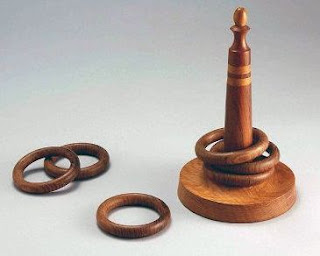Regardless of social class, childhood in the late Middle Ages was markedly different from what we know today. Children were viewed as miniature adults, expected to contribute to the family’s livelihood from an early age. [link]
One of the reasons behind this theory is pictures from the era that show little distinction in clothing worn by children and adults. That essay goes on to say:
Playtime was limited, and the concept of a carefree, innocent childhood was virtually nonexistent. Instead, children were taught the skills necessary for survival.
One of the first serious explorations of daily life in the Middle Ages found evidence against this theory. The Ties That Bound: Peasant Families in Medieval England, by Barbara Hanawalt, looked at coroners' reports in England that explored deaths. Interrogation of witnesses regarding "what you were doing when..." turn up a wide variety of daily activity that otherwise would never have been recorded. Those reports tell us that young children (with ages in the single digits) are playing at home or outside with friends, and not dragged into slavish agricultural labor or being drilled in the "skills necessary for survival." In fact, children are out playing and falling into ditches or dying in other accidents totally unsupervised by adults. They kicked balls around, or played catch, or were playing with toys or dolls by the hearth when disaster struck.
There is another notion that parents did not love their children the same way modern parents do. Because families were larger than they often are now, and because a child might be given the same name as a child born previous to the same parents that had died early on, the feeling is that parents considered babies interchangeable, or merely as a way to produce "more laborers" for the family business. There are plenty of recorded examples of parents grieving for dead children, lullabies that were sung to babies, and toys and games that were made for them. More affluent families had advice books written for raising children well and making sure they are moral.
The Church supported the difference between children and adults:
It came to regard children under the age of puberty as too immature to commit sins or to understand adult concepts and duties. [link]
Puberty was 12 for girls and 14 for boys, and that is when they generally began to be educated in ways that would lead to economic success in the future, either in their parents' trade or as an apprentice to some other person with a desirable career.
Since a large part of the population—perhaps up to a third—at any time was under the age of puberty, there was no getting around the idea that children were different and needed to be nurtured and cared for, not treated as tiny adults. That's a lot of babies being produced at any time, and a lot of mouths to feed. Was there a way around that? Did the Middle Ages have methods of contraception available to them? Let's take a look at that topic tomorrow.



